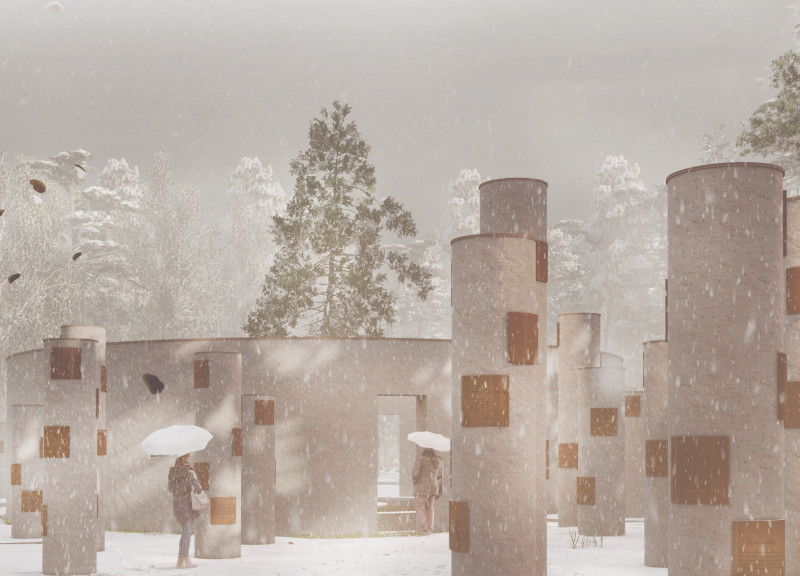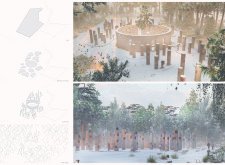5 key facts about this project
The memorial site is designed to reflect its natural surroundings within a pine forest in Latvia. It serves as a space for reflection and remembrance, honoring cultural practices related to cemeteries in the region. The overall concept emphasizes the connection between memory and nature, allowing visitors to engage emotionally with the environment.
Design Concept
The layout of the memorial site is carefully organized into different areas that encourage both personal contemplation and shared experiences. Columns of varying heights resemble the shapes of the surrounding trees. They hold urns while also establishing a visual link to the landscape. This relationship between natural elements and architectural features creates a unified space.
Pathways
Pathways are an important feature of the design, as they guide visitors through the site and provide a sense of protection. These routes lead towards a central round structure that contains niches of various sizes. The circular form invites inclusivity, encouraging visitors to connect with one another in this shared space.
Materiality and Structure
The round structure is defined by concrete walls, which provide support for the niches. This choice of material ensures durability while maintaining harmony with the natural environment. A round bench surrounds a central water feature, adding a calming element. It offers a place for visitors to sit and reflect, as well as serving as a symbol of continuity.
Symbolic Elements
At the center stands a pine tree, highlighting the connection between nature and the cycles of life and death. It reinforces the themes of remembrance and renewal throughout the site. The presence of this tree encourages visitors to reflect on their relationships with nature and the significance of memory, adding depth to the experience of the memorial.






















































